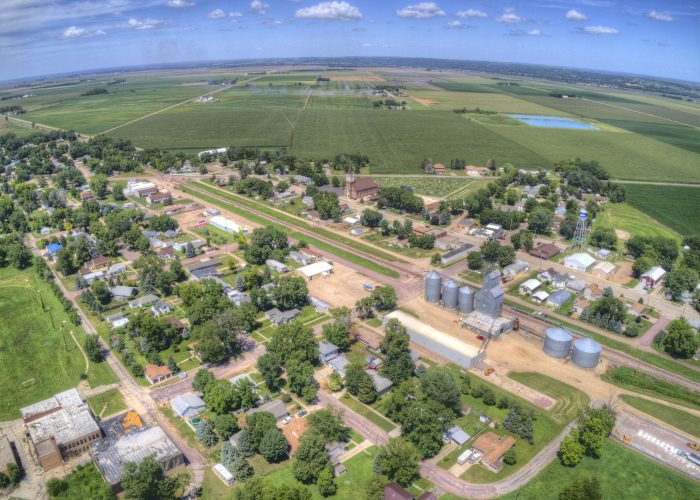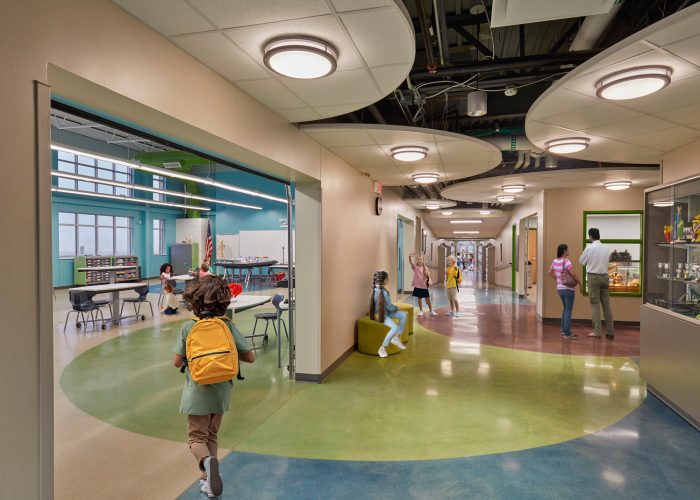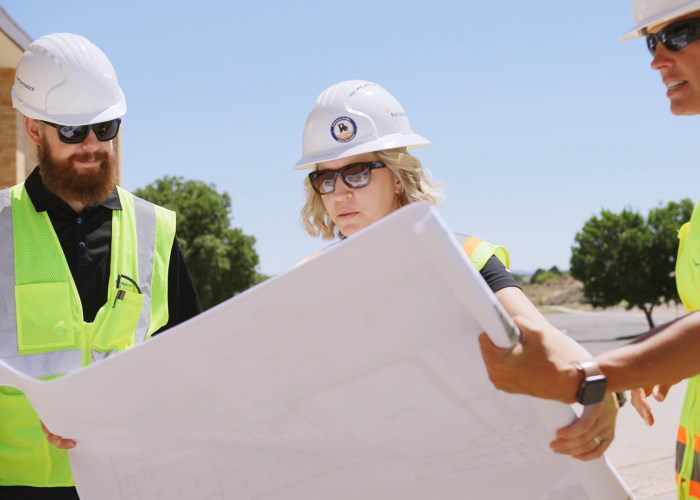Introduction
Most city and facilities managers can agree that supporting their citizens, providing the best services, and saving money is a constant balancing act. But now, more than ever, local governments are charged to do more with less. That dilemma has led many to defer routine maintenance to save costs.
While this may sound like a great idea, it is only so in the short term. Postponing regular maintenance in favor of waiting until equipment breaks or fails can provide immediate budget relief for many cities and towns across the U.S., particularly as they balance the effects of the pandemic and the economy. However, a prolonged tendency toward deferring critical maintenance issues can lead to higher operating costs, deteriorating assets, or worse, critical failures that impact your residents.
This resource can guide municipalities to address their deferred maintenance needs while enhancing critical infrastructure.
Understanding Deferred Maintenance
Defining Deferred Maintenance
Deferred maintenance refers to postponing or delaying necessary repairs, upkeep, and maintenance of public infrastructure, facilities, and assets. These include roads, bridges, public buildings, parks, water and wastewater systems, and other essential municipal assets. It often occurs because cities and towns do not allocate sufficient personnel or financial resources to promptly address routine maintenance tasks and necessary repairs.
Common Causes of Deferred Maintenance
One of the common causes is tight budgets – sometimes, there isn’t enough money to tackle all the repairs and maintenance needed. Cities and towns tend to focus on short-term goals, often overlooking the long-term health of our assets, prioritizing immediate financial gains over the long-term well-being of their infrastructure. The result is that maintenance gets postponed.
Other factors, like poor planning, competing priorities, and unexpected events, can also contribute to this maintenance backlog. The key is to recognize these challenges and find a balance between addressing immediate needs and ensuring the long-term health of our cities and counties.
The influx of stimulus funds over the last few years has added a new wrinkle to the challenge. While they’ve provided a great way to fund projects like road improvements, water and wastewater upgrades and new construction and renovations, they’ve also forced maintenance and operations staff to wear new hats. Operations staff have always tackled project management for cities and towns, but these new funds and the projects they’ve enabled have, in many cases, shifted municipal priorities.
This new prioritization now focuses on meeting the requirements of the stimulus-funded projects and their deadlines. This reprioritization has further forced cities and towns to postpone regular maintenance even further.
Consequences of Ignoring Deferred Maintenance
The problem with deferred maintenance is that it can lead to a domino effect of issues. Infrastructure can deteriorate, services may suffer, repair costs skyrocket in the long run, safety hazards emerge, and our communities’ overall quality of life can take a hit. So, addressing deferred maintenance isn’t just about fixing things; it’s about ensuring our cities and towns remain safe, functional, and enjoyable places to live.
It is crucial to proactively mitigate the effects of deferred maintenance, or cities and towns could face the following issues:
- Deterioration of Infrastructure: Delaying maintenance and repairs can lead to the gradual deterioration of public infrastructure, such as roads, bridges, public buildings, and utility systems, resulting in unsafe conditions and increased repair costs.
- Safety Hazards: Crumbling infrastructure, malfunctioning equipment, and neglected safety measures can lead to accidents and injuries.
- Increased Repair Costs: What might have been a relatively minor repair can escalate into a major, costly project if deferred for too long. Delayed maintenance often leads to more extensive damage and the need for more expensive repairs or replacements.
- Reduced Service Quality: Public services can suffer when maintenance is ignored. For example, neglected water treatment plants can result in water quality issues, and poorly maintained roads can lead to traffic congestion and increased vehicle wear and tear.
- Economic Impact: Deteriorating infrastructure can deter businesses from investing in the area, leading to decreased economic growth and property values.
- Legal and Regulatory Issues: Ignoring maintenance can violate safety and environmental regulations, potentially leading to fines and legal liabilities for cities and organizations.
- Public Dissatisfaction: Residents and stakeholders may become dissatisfied with managing public assets and services, leading to decreased trust in local government or organizations responsible for maintenance.
- Environmental Impact: Deferred maintenance can also have environmental and sustainability consequences. For example, neglected stormwater management systems can increase pollution and damage natural ecosystems.
Addressing Deferred Maintenance
Start with a Facility Assessment
Over the last few years, especially during the pandemic, many cities and counties undertook updating their municipal master plan. In these plans, deferred maintenance was often left out or minimally addressed due to the need to address growth, economic development and citizen services. Comprehensive facility assessments bridge those gaps between deferred maintenance and master plans and serve as the first step for clearing the maintenance backlog. This process can provide a “state of buildings” report that evaluates how facilities operate, identifies potential issues, and provides a blueprint for prioritizing repairs. A facility study can be an involved process that takes several weeks or months but typically includes the following steps:
- Asset Inventory: The first step is to inventory all public assets, including buildings, infrastructure, equipment, and facilities. This inventory should be as detailed as possible, cataloging each asset’s location, age, condition, and maintenance history. It lays the groundwork for a clear understanding of what needs attention.
- Condition Assessment: Once the inventory is complete, each asset’s condition should be assessed thoroughly. This involves on-site inspections, data collection, and evaluation by qualified professionals. Condition assessments help identify which assets are in the worst shape and require immediate attention.
- Prioritization: With information on asset conditions, city managers and maintenance teams can prioritize maintenance and repair projects. Assets that pose safety risks, are critical to essential services or have the potential for significant cost savings when addressed promptly should be high on the list.
- Cost Estimation: An estimated cost should be calculated for each prioritized project. This includes the direct costs of repair or maintenance and any associated indirect costs, such as service disruptions or additional repairs that may be needed if the issue is left unattended.
- Long-Term Planning: After establishing priorities and estimated costs, cities and towns can develop a long-term maintenance plan. This plan should outline the timeline for addressing deferred maintenance issues, allocating budgets, and identifying funding sources.
What’s even more crucial than the process itself is the choice of the partner. Many construction and engineering firms provide building assessments or facilities studies, but the quality of their final reports and the value they deliver can differ significantly. Additionally, the costs associated with these assessments can vary from being offered at no charge to costing tens of thousands of dollars. To ensure they’re making a wise investment, cities and towns should opt for a facility assessment provider with a proven track record of assisting similar clients in identifying, prioritizing, and addressing deferred maintenance issues. This provider must communicate the expected deliverables and associated costs upfront, allowing municipalities to make informed decisions.
Typical Deferred Maintenance Solutions
Deferred maintenance projects can include a variety of improvements. Measures can range from traditional solutions like LED lighting to renewable solutions, including heat recovery chillers, air-to-air heat recovery, variable volume strategies, and supplementing central plant/cooling sources with ground source geothermal systems. In general, typical improvements for government facilities include:
- Energy system upgrades (HVAC replacements)
- LED lighting and occupancy sensors
- Water management solutions (water-saving plumbing features)
- Building envelope solutions (new roofs and windows)
- Control system upgrades
- Four-season optimization
- Solar power solutions
- AMI and SCADA solutions
- Resiliency and microgrid technologies
Factors to Consider
Most of the cost of owning and running a government facility is ongoing operations and maintenance. It is usually the second highest expense after personnel costs. Various factors should be reviewed when considering a project to address deferred maintenance. These items can provide a benchmark for the work needed and the savings potential a city may see from implementing new, energy-efficient solutions. Key factors to consider include:
- Square footage of city facilities
- Annual energy and operating costs of city facilities
- Age and state of buildings and equipment (HVAC, controls, lighting, etc.)
- Recurring maintenance problems/high maintenance costs
- Budget resources
- Staff expertise in energy management
- Staff capacity to self-perform improvements/maintenance
Funding a Deferred Maintenance Project
Since the pandemic, this influx of government funding has helped revitalize the county’s critical infrastructure. While those funds have injected a tremendous amount into the budgets of cities and counties, budgets are still stretched due to supply chains and inflationary cost increases. As a result, maintenance and operation are typically one of the first budgets to be cut, resulting in deferred maintenance increases year over year.
For example, in Tennessee, the TN Advisory Commission on Intergovernmental Relations (TACIR) stated in its most recent report that Cities and Counties will need an investment of over $8B over the next five years, with much of that investment in addressing deferred maintenance. There’s a lot of need, and the situation will only worsen if we don’t address them soon.
Energy Savings Performance Contracts
To solve this compounding problem, local municipalities can turn to energy savings performance contracts to fund these improvements. Performance contracting is a budget-friendly procurement method that allows public entities to implement facility improvements that lower energy and water consumption while enhancing operational efficiency. This financing option benefits local municipalities seeking to leverage energy savings to tackle deferred maintenance issues and fund necessary improvements without upfront capital investments. The essence of this method lies in its capacity to finance projects through the guaranteed energy and efficiency savings they generate, eliminating the requirement for upfront capital expenditures.
Success Stories
Cities and towns across the United States are using energy savings performance contracting to solve deferred maintenance backlogs. They are implementing AMI, LED lighting, wastewater treatment plant upgrades, solar, and more. Below are a few of our successful projects that have helped save energy and improve operational efficiency.
- City of Beeville, TX: This two-phase, $19M project included smart meters with AMI and critical infrastructure improvements to its wastewater treatment plant.
- City of Dayton, TX: The city implemented a two-phase project to install LED lighting, upgrade HVAC across the City’s buildings, improve building automation systems, and install smart water meters.
- St. Joseph County, IN: This award-winning project provided significant community infrastructure improvements to the county that reduced energy consumption by 31%.
Partner with Performance Services to Solve Deferred Maintenance
Leaning on our years of work in local government, our experienced in-house staff can provide project flexibility and revenue-enhancing programs that benefit the entire community. We understand the high costs of maintaining and operating government facilities and work hard to achieve the lowest possible lifetime cost of ownership for our clients. Our team can provide a comprehensive facility study and energy savings performance contracts to ensure your city doesn’t fall behind in upkeeping critical infrastructure.
Ready to solve your deferred maintenance issues? Contact us today, and our talented, in-house team can develop a comprehensive facility assessment to help your city or town prioritize critical needs and implement solutions.





